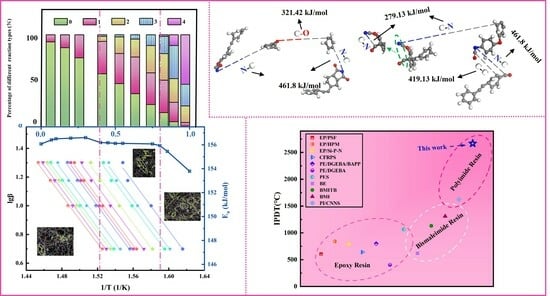Cure Kinetics and Thermal Decomposition Behavior of Novel Phenylacetylene-Capped Polyimide Resins
Abstract
Share and Cite
Xiong, X.; Guan, H.; Li, B.; Yang, S.; Li, W.; Ren, R.; Wang, J.; Chen, P. Cure Kinetics and Thermal Decomposition Behavior of Novel Phenylacetylene-Capped Polyimide Resins. Polymers 2024, 16, 1149. https://doi.org/10.3390/polym16081149
Xiong X, Guan H, Li B, Yang S, Li W, Ren R, Wang J, Chen P. Cure Kinetics and Thermal Decomposition Behavior of Novel Phenylacetylene-Capped Polyimide Resins. Polymers. 2024; 16(8):1149. https://doi.org/10.3390/polym16081149
Chicago/Turabian StyleXiong, Xuhai, Hongyu Guan, Baiyu Li, Shuai Yang, Wenqiang Li, Rong Ren, Jing Wang, and Ping Chen. 2024. "Cure Kinetics and Thermal Decomposition Behavior of Novel Phenylacetylene-Capped Polyimide Resins" Polymers 16, no. 8: 1149. https://doi.org/10.3390/polym16081149
APA StyleXiong, X., Guan, H., Li, B., Yang, S., Li, W., Ren, R., Wang, J., & Chen, P. (2024). Cure Kinetics and Thermal Decomposition Behavior of Novel Phenylacetylene-Capped Polyimide Resins. Polymers, 16(8), 1149. https://doi.org/10.3390/polym16081149





